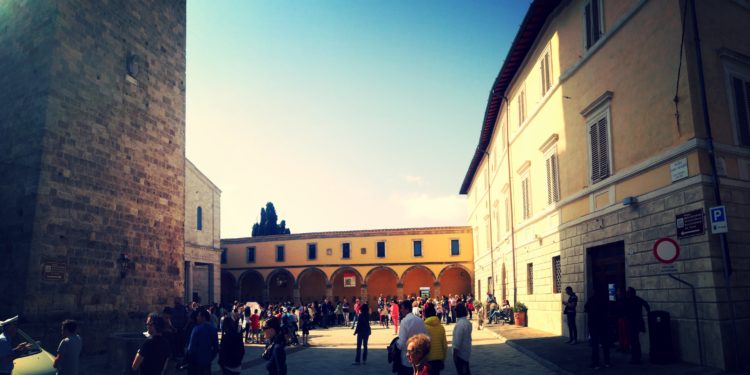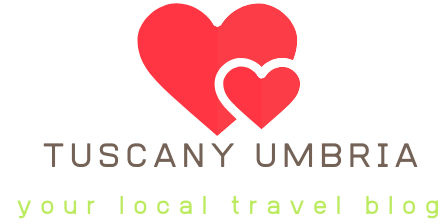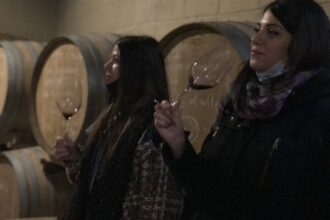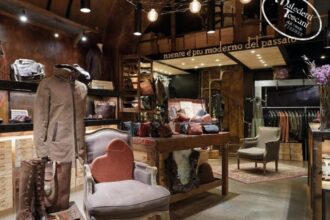Etruscan Musuems

Etruscan Musuems, here is a list of the best Etruscan Museus around us.
1) Museo Archaeologico Nazionale of Chiusi, (high city not Chiusi station area) just 16 km from il Fontanaro farm.
The Etruscans of Chiusi made a particular kind of pottery called Bucchero ware that is very dark and imitates metal; of course the best collection of this ware is right here in  Chiusi. Most important discoveries in the area: Tomba della Scimmia (tomb of the monkey), a tomb with wall paintings, visitable by appointment
Chiusi. Most important discoveries in the area: Tomba della Scimmia (tomb of the monkey), a tomb with wall paintings, visitable by appointment
Funniest item: by far the best object in Chiusi, if not in all museums of Tuscany, is the “Sella Caccatoia“, an object of which I am trying to get a photo for your entertainment. It is a terracotta potty that Etruscans used for their toddlers. They also own a real ghirarium (not a reconstruction), it’s in the basement, don’t miss it.
where: Via Porsenna, 93 – 53043 Chiusi (SI)
When: 09.00-20.00 (last entrance at 7.30 PM)
Tickets: € 6,00. Up to 18 year old, and after 65 year old is FREE!
MORE INFO: Tel. 0039 0578 20177; fax 0578 224452; e-mail: sba-tos.museochiusi@beniculturali.it
http://www.archeotoscana.beniculturali.it/index.php?it/182/storia-e-descrizione
2) Cortona, MAEC (Museo dell’Accademia Etrusca) 30 km far from il Fontanaro.
MAEC’s history stretches back to 1727 when the Accademia Etrusca (Etruscan Academy) was founded; the academy’s statutory goals included the dissemination of historical and artistic culture through key-tools such as the Library and the Museum both of which were public right from the earliest stages; over the past three centuries the Museum has undergone extraordinary development all the way to its final re-arrangement in 2008 The museum currently consists of two main sections respectively devoted to the Accademia Etrusca and the Etruscan and Roman city of Cortona; the former section accommodates materials providing a unique testimony to the life and continuing efforts of the best  known cultural institution in town; such materials range from the earliest bequests from academicians in the 1700 and 1800s to materials acquired over the centuries: the most valuable pieces – real “symbols” of the Cortonese culture – include the Etruscan bronze lamp, the so-called Musa Polimnia, a fine collection of Etruscan and Roman ceramics and bronzes as well as the Corbelli collection including materials from the Egyptian civilization; more recent materials include an imposing collection of art objects and furnishings formerly owned by the Tommasi-Baldelli family, one of the most prominent families in town, as well as a series of works by Cortona-born painter Gino Severini, one of the founders of Futurism, bequeathed to the town of Cortona by the Maestro himself. Other exhibits include archaeological finds from the city and its surroundings providing a link to the modern section devoted to the development of the latter.
known cultural institution in town; such materials range from the earliest bequests from academicians in the 1700 and 1800s to materials acquired over the centuries: the most valuable pieces – real “symbols” of the Cortonese culture – include the Etruscan bronze lamp, the so-called Musa Polimnia, a fine collection of Etruscan and Roman ceramics and bronzes as well as the Corbelli collection including materials from the Egyptian civilization; more recent materials include an imposing collection of art objects and furnishings formerly owned by the Tommasi-Baldelli family, one of the most prominent families in town, as well as a series of works by Cortona-born painter Gino Severini, one of the founders of Futurism, bequeathed to the town of Cortona by the Maestro himself. Other exhibits include archaeological finds from the city and its surroundings providing a link to the modern section devoted to the development of the latter.
Funniest item: the Ghirarium (reconstruction and diagram). This large terracotta pot was developed to breed doormice for eating. Yup, Etruscans ate mice… they also used rabbit blood in their hare sauce, according to Tuscanycious.
Tickets MAEC
Special Tickets (MAEC + MUSEO DIOCESANO)
Reservations Guided visits and teaching labs may be reserved during opening hours calling the following number 0575 637235 or sending an-email to the following address prenotazioni@cortonamaec.org at least four days in advance.
|
For general information and
visits to monuments included in the Park: Museo dell’Accademia Etrusca e della città di Cortona
Piazza Signorelli 9, Cortona (AR)
tel. 0575 630415-637235- 612565
info@cortonamaec.org
Tumulo I del Sodo
Open by appointment
telefono: 0575/637235
e-mail: prenotazioni@cortonamaec.org
Tumulo II del Sodo
Every days
dalle ore 8,30 alle 13,30 – (chiuso il lunedì)
free entrance


